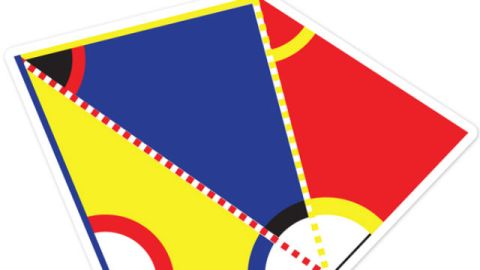Euclidean Fun for Kids

Twenty-three centuries after Euclid of Alexandria composed his Elements of Geometry, some of his favorite shapes – including the triangle, square, and circle – were re-released as repositionable wall graphics today. The sturdy wall graphics substrate, which was not available in Euclid’s era, has the potential to make geometry interesting again, and even to change the worldview of primary school children.
“Kids learn with their hands,” says experimental philosopher Jonathon Keats, who curated the collection for the wall graphics company Walls 360. “Children figure out how the world works by climbing rocks and falling off bicycles. Repositionable wall graphics extend geometry into the realm of physical experience.”
The wall graphics in this new collection include both simple shapes and complex combinations arranged to show the ways that shapes can interrelate. All are repurposed from Oliver Byrne’s classic Elements of Euclid, first published in 1847, which illustrated the basics of Euclidian geometry in strikingly modern combinations of bright primary colors. “The images in Byrne’s Euclid are remarkably intuitive,” Keats says. “You could work out Euclid’s system without even looking at the text. In fact, you’re better off without all the verbiage, as any child will understand (though parents may not get it).”
Keats, whose ballet for honeybees was featured on Big Think, believes that the future of textbook-free adhesive geometry is enormous, and argues that the greatest impact will be on children who find ways to break Euclid’s rules. “The world needs more non-Euclidian thinking,” he says. “When kids start trying to stick these wall graphics onto spheres and Calabi-Yau manifolds, they’ll begin questioning all our ideas and beliefs.”





